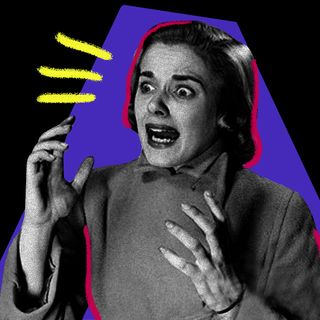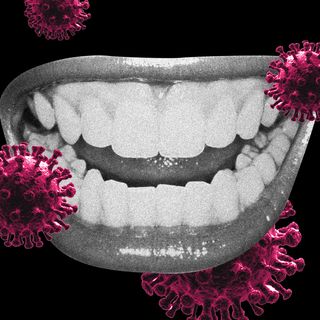
The Second Wave: A Doctor Who Has to Choose Who Gets a Ventilator Says “Everybody’s Got Covid Now”
We compiled portraits of frontline healthcare workers’ experiences in India’s current pandemic crisis. In this installment: A 34-year-old doctor at a private hospital in Kolkata.

Dr. Aviral Roy, a 34-year-old critical care and internal medicine doctor and director of emergency services at a private hospital in Kolkata, shares what his day looks like on the frontlines of the pandemic. This is the first installment of a series that looks at the toll of a worsening Covid19 crisis from multiple perspectives within the healthcare system.
I’m in the department of critical care, which is handling Covid. We have a total of probably 200 beds in the system right now, out of which 160 are Covid. We’re back at the same caseload of last year’s peak. The trouble is, we have not peaked this year yet.
I get to work by 8-8:30 a.m. In the morning, it’s about understanding how many patients are on the ventilator, how many patients are on high-flow oxygen devices, what our patient census is, how many patients are waiting for beds in the Emergency Room (ER), how many patients came overnight in the ER; basically, what’s our patient load, and what’s the load on our system. Then we have a bunch of administrative morning meetings where we’re like: what are the requirements? How many VIP patients are there? How many patients did not make it? How many patients are we discharging today? Basically, trying to understand what’s our bed capacity and ability to care for new patients.
By 9:30 or 10 a.m. we start rounds. Normally, rounds consist of about 30 to 35 patients, a mixture of Covid and non-Covid. You finish non-Covid rounds first because you don’t want to get those patients infected. Then, you gown up with full PPE and go into the Covid areas. Once you finish Covid rounds, you come out, change clothes, maybe get some lunch, and start making phone calls to families of Covid patients. Very often they themselves also have Covid. You explain the condition, and it’s pretty unfortunate for them because their loved one is in the hospital, and they’re just hoping and waiting 24 hours for this one five-minute phone call from the doctor. It could be anything from, “Your loved one is fine,” to “I’m sorry, your loved one is dying.” And it’s not a one-time phone call. You do this for days and days and days on end; for 10, 14 days, sometimes up to a month. If I have, like, 12 Covid patients, it’s about five minutes per patient, it takes an hour to an hour and a half.
Then, you do tele-OPD for three hours or so, see your Covid-positive patients who want to have a doctor consultation, or follow up with a patient you want to monitor. By this time, it’s probably 7 or 7.30 in the evening, and you get back home. Every day is 9 to 7, a 10-hour day — minimum.
Last year, we were still able to keep the hospital 60% Covid patients and 40% non-Covid patients. With the way this surge is going, it’s probably going to end up 80% Covid, 20% non-Covid. Basically, at that point, you’re a fully emergency hospital. You’re not dealing with elective cases. You’re only doing things that cannot be postponed and are an immediate threat to life.
Luckily, hospital morale is fine. What is taking a beating is a lot of people who have been vaccinated are starting to get Covid. They’re getting mild Covid, but they’re getting Covid nonetheless. My colleagues who have already had Covid, and have had the vaccine, both doses, have got Covid.
When the first time the wave happened, there was a lot of, “Oh you’re a frontline worker? Because you work in a hospital you cannot just come back to your house because you might bring Covid back with you.” I think that was a big demoralizer. But that’s kind of gone away — because everybody’s got it now.
There is pressure on staff — primarily from increased caseloads suddenly and because of decreased efficiency. Normally, staff can do a 12-hour shift, because they’re in normal clothing and if they need to go to the toilet or eat food, they just take a break and then come back on shift. But when you’re on a Covid ward, in PPE, wearing a full mask and full body suit, you can’t even take a pee break; you can’t take a water break. That’s not sustainable. What used to, maybe in a 24 hours shift, need three nurses for one patient, now, I need four nurses for that same patient. Because I can only do 6-hour shifts per nurse, instead of 8- or 12-hour shifts per nurse. It’s very difficult to suddenly ramp up care — if this peak goes away, then I’m left horrendously overstaffed, because I can’t just fire them, like, “I’m sorry, no more peak, you are let go.”
Same thing with doctors. Now we’re seeing a major, major peak, and I need to hire more doctor staff. But even if I go looking for more doctor staff, it’s not like buying a car or an appliance where I can just go to the shop. I need to interview. They may need to quit their facility and move to mine with a one-month notice period. So I can’t ramp up manpower.
We don’t expect everybody to be like “Oh my god, frontline workers, they’re doing such a great job, blah blah blah.” It would mean far more if the population actually took care of themselves. That would mean far more than thank you — by doing the social distancing, not partying, masking. We’re working 24/7 on this anyways. This is our job. It’s what we do for a living. But it takes a toll on us when young people — 30-, 35-, 40-year-olds are sitting on the ventilator dying. And you’re talking to family members day in and day out — “I’m sorry, they’re dying, I’m sorry” — and, you know, it’s all avoidable had they just worn a mask.
We already do not have enough beds. Once you don’t have beds, then even people who were easy to save — you just give them 2-4 liters of oxygen, and they’re doing fine — they won’t have a place to go. And they’ll start getting really sick. We’re near that point where decisions will have to be made to ration resources. Those discussions have already begun in the hospital.
If ECMO (extracorporeal membrane oxygenation, a form of life-support) is needed — we only have one ECMO machine left — I get two calls asking who am I going to accept on the ECMO machine. Am I going to accept the first one who calls? Or am I going to accept the guy who calls a half-hour later because he’s younger and might have a better chance of not dying?
We already make these decisions on a daily basis, we just don’t talk about it. But when it starts happening to two people you could’ve potentially saved — one maybe had a 50% chance of making it, one had a 30% chance of making it. On a regular day, we would’ve put both on a ventilator. But now, you’re like — you know what, give it to the 40-year-old. Because if you save a 40-year-old, you save an entire family. Whereas, if you save the 60-year-old, you’re maybe saving the parent of kids who have grown up and can take care of themselves.
People just need to know to wear a mask and stop heading out. But that’s not going to happen, because let’s face it: people don’t care about their health. They don’t care about their health as much as they should. The trouble is, everybody believes nothing will happen to them until it happens to them. And statistics, of course, is a cold, hard monster. Stats don’t care who you are, where you are, who you know, how much money you make — it does not care. It’s going to get you. And most people don’t get that.
This interview has been condensed and edited for clarity. As told to Liesl Goecker.
Related


Our Fight‑or‑Flight Response Is More Than Just Instinct, Scientists Find
